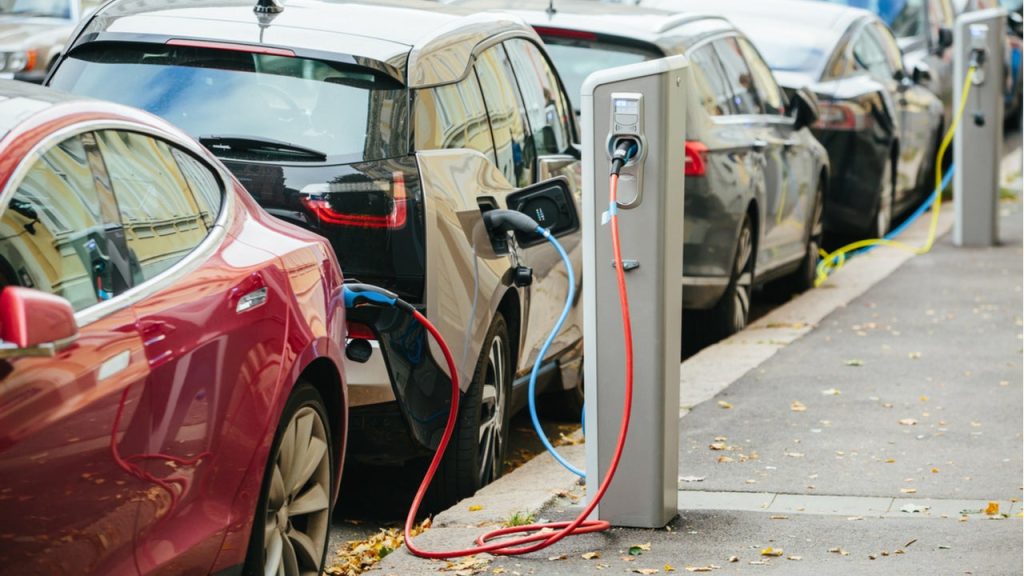Key takeaways
- Green auto loans help people purchase eco-friendly cars.
- EVs tend to be more expensive than gas-powered cars, but green auto loans often come with lower interest rates or longer repayment terms, which could make them more affordable.
- Compare multiple EV loans before choosing a lender.
A green auto loan is an electric vehicle financing option for consumers purchasing zero- or low-emission vehicles. They often feature lower interest rates and several other perks. Although President Donald Trump has revoked Joe Biden’s executive order stating that half of all new vehicles sold in the U.S. should be electric by 2030, electric vehicles (EV) have continued to gain market share over the past few years. In 2024, the U.S. electric vehicle market share was 8.1 percent, up from 7.8 percent in 2023, according to Cox Automotive.
If you’d like to add to these numbers, now might be the perfect time to get behind the wheel of a green vehicle. If you are purchasing an electric car, you may be able to save money by pursuing a green auto loan.
What are green auto loans?
A green car loan can be used to purchase eco-friendly cars — or cars with lower average emissions. These fuel-efficient cars typically fall under the category of hybrid or electric and are available from many manufacturers, from Ford to Nissan to Tesla.
Green auto loans incentivize shoppers to consider these environmentally friendly vehicles by offering interest rate discounts, extended repayment terms and other benefits. These loans can make green vehicles more affordable for borrowers.
For instance, as of this writing, Nissan is advertising a 2.90 percent annual percentage rate (APR) on 60-month loans for its Leaf EV. That special EV loan rate is far lower than the current average interest rates on auto loans, which were nearly 8 percent for new cars in February 2025. But you’ll have to meet credit and other requirements to qualify for such deals.
What qualifies as a green car?
A green car is a vehicle that uses alternative fuel or electricity instead of gasoline or diesel. They emit less carbon dioxide and are better for the environment. Other benefits include less maintenance, fewer fuel stops and quieter engines.
The best green vehicles have a SmartWay designation. This is a score the U.S. Environmental Protection Agency awards to vehicles with the lowest emissions for each model year. Many lenders use this designation to determine whether your car qualifies for a money-saving green auto loan.
Still, green vehicles come with a higher average upfront price tag than traditional car options. So, many states encourage drivers to purchase these vehicles by offering tax credits. The federal government offers a tax credit of up to $7,500 for qualifying new EVs and plug-in hybrids and $4,000 for used.
According to Kelley Blue Book, the average price of an electric vehicle in the United States was $55,554 in December 2024. But not all electric vehicles will set you back that much. For instance, the starting price for a 2025 Nissan Leaf is $28,140, while the 2025 Tesla Model 3 starts at $44,130.
How do green loans differ from conventional auto loans?
A green auto loan functions like a traditional car loan: You’ll apply for the loan through an auto lender, receive an interest rate based on your credit score, select a repayment term and make regular payments with interest over the loan term. However, the details of an electric vehicle financing and a conventional car financing may differ.
| Green car loans | Conventional car loans |
| Rates may be lower to incentivize EV purchase | Higher rates |
| Terms may be longer to lower the monthly payments of more expensive vehicles | Shorter terms |
| More likely to be offered through local credit unions or manufacturers, though there are EV-focused lenders like Tenet | Available through any type of lender |
How to apply for a green auto loan
If you’re ready to purchase your first EV, take these steps to apply for electrical vehicle financing.
- Review your credit score. Check your credit score to see if you can meet a lender’s minimum credit requirements. If yours is in poor shape and you can’t wait for it to improve, try looking into bad credit auto lenders.
- Comparison shop. Comparing a few EV rate quotes before applying for a loan can help you get the best deal. Make sure to check out Tenet, Bankrate’s 2024 pick for best EV lender.
- Submit a full application. After you’ve found the best deal and EV that matches your needs, apply for a loan online or in person.
Check out these resources for help as you begin the car-buying process:
- PlugStar: PlugStar is a particularly helpful resource for car shoppers early in the process. After entering your ZIP code and desired make and model, you’ll see cost estimates, available incentives, information on local dealerships and the vehicle’s environmental footprint.
- EV Life: EV Life’s EV Climate Loan allows you to get prequalified with multiple lenders and automatically qualifies you for rebates and incentives, applying those savings upfront to your monthly payment.
Bottom line
Whether you’re looking to buy your first EV or replace your existing one, a green auto loan can help. Some lenders offer EV rate discounts or low-rate specials to help you finance a green vehicle, which could help you save thousands of dollars. That said, before you apply for electric vehicle financing, also compare rates and terms from lenders that only offer traditional auto loans so you can get the best deal for you.
Read the full article here









